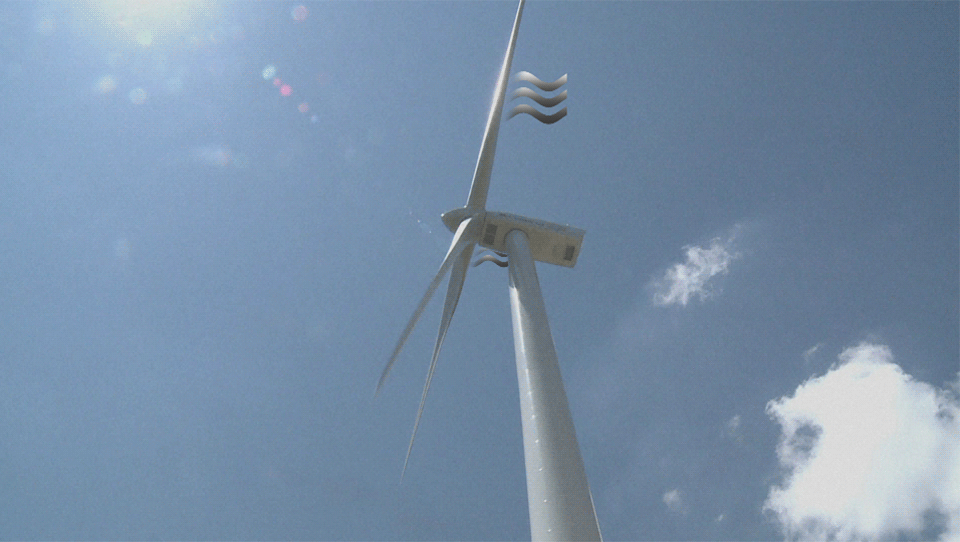On the front lines of combating climate change is Caltech aeronautic and bio-engineering professor Dr. John Dabiri. Searching for energy sustainability solutions, he’s taking cues from some simple animals.
“The name of the game here is how you generate energy and how you consume it,” Dabiri told “TechKnow.” “And in biological systems—whether it’s a school of fish in the ocean, a flock of birds, or just a plant growing in a field—they’ve come across ways to very efficiently generate energy and to consume it efficiently as well. So our goal is to use concepts from physics to extract how they do that and apply it to systems like wind energy and underwater vehicles.”
The common wind turbines seen around the world producing energy are the large, three-bladed propeller type. But Dabiri is re-thinking their size, shape, and overall effectiveness.
“The challenge you see in wind energy is that an individual wind turbine—although it might be very efficient—creates a very choppy air behind it,” he says. “One of the challenges we have on a wind farm then is to arrange them to deal with that turbulence.”

For answers, Dr. Dabiri is looking underwater and taking a lesson from schools of fish.
“As each one of those fish are flapping its tail, it’s also creating this choppy wake behind it. They swim close together and arrange themselves in such a way that they’re able to be more efficient in the group than by themselves. And so that’s what we wanted to get after, a design for a wind farm where the wind turbines was actually more effective in the group than they are by themselves.”


In California’s dusty, hot and windy Antelope Valley, scientists are able to test their latest hypothesis about the best way to harness energy from all this wind.
Caltech post-doctorate scholar Mattias Kinzel spends much of his time out here, studying different types of vertical wind turbines.
“We can space them closer and therefore get more energy for a given area of land,” says Kinzel, who is trained as a mechanical engineer. “The amount of sunlight [brought] to Earth in a matter of a few hours would be enough to supply energy for the whole globe for a whole year. We’re doing such a poor job so far of capturing that energy—my time is well spent advancing the technology to do this.”
Watch “TechKnow” Saturdays at 7:30 p.m. ET/4:30 p.m. PT.
Error
Sorry, your comment was not saved due to a technical problem. Please try again later or using a different browser.